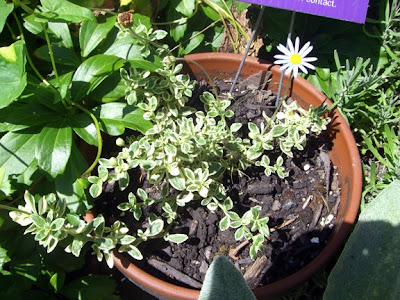A test garden for future annuals on Lake Erie

Photo by Don Zinteck, Photographics2
I'm sure I've already convinced most that Buffalo is a gardening Mecca. Another great asset we can claim is the Erie Basin Marina University Test Gardens, where about 300 specialty annual varieties (6-9 plants each!), are tested each year before they reach the market–if they reach the market. And they're hidden in plain sight–open the the public all summer–long right along a Lake Erie waterfront public park & marina. There are test gardens around the country. Maybe there are some by you.
 The test gardens take on plugs from world-wide seed companies like Danziger from Israel, Syngenta of Switzerland and Ball Seed of the U.S. The plugs are grown in the nearly antique greenhouses (and this year, a few in cold frames) of the Olmsted Parks Conservancy, located in Martin Luther King, Jr. Park, one of the Frederick Law Olmsted-designed city parks. After three weeks there, they're ready to face their test–the conditions in this Zone 6 city on the wind-whipped waterfront, in a city that has the top percentile for sunny days for the months of May through September of any city in the U.S.
The test gardens take on plugs from world-wide seed companies like Danziger from Israel, Syngenta of Switzerland and Ball Seed of the U.S. The plugs are grown in the nearly antique greenhouses (and this year, a few in cold frames) of the Olmsted Parks Conservancy, located in Martin Luther King, Jr. Park, one of the Frederick Law Olmsted-designed city parks. After three weeks there, they're ready to face their test–the conditions in this Zone 6 city on the wind-whipped waterfront, in a city that has the top percentile for sunny days for the months of May through September of any city in the U.S.The gardens are tended by Stan Swisher, Superintendent of Grounds and his merry band of caretakers, mostly interns & volunteers. Stan is a master gardener of whom Stacey Hirvella, Martha Stewart Living's Senior Associate Garden Editor, said, "...so knowledgeable it was scary!"
 How cool is this? Flowers & sailboats!
How cool is this? Flowers & sailboats!And the plants themselves? Fascinating. They are planted in the ground and in more than 50 large stone urns around the marina, beside sidewalks, and in dedicated beds. All are drip irrigated, or, if in the pots, misted. He uses very little fertilizer on them once established. He tries to care for them in much the way we would in our own gardens. While they don't have ALL the predators we might in our gardens (like deer, although they've had a few down there!) they do have bunnies, birds, bugs & squirrels like a typical Zone 6 garden.
 Summertime Red Velvet, Dummen
Summertime Red Velvet, DummenI have been able to listen to Stan talk about the plants while people like Stacey, horticulturist Terry Ettinger and Steve Aitken (editor-in-chief of Fine Gardening), were asking him questions. You can learn a lot by hanging out with people that know what they're talking about. The flowers here, mostly annuals, are genetically modified to carry traits conducive to selling, marketing and shipping products. You would think the seed companies would be testing new colors and disease resistance, which they most certainly are, but they're also trying to increase stem-strength, spill-over for baskets, create high bloom-counts, make larger mounding forms and increase flower size, among dozens of other traits.
To see a video of Terry Ettinger's "Garden Journeys," (airing on Time Warner's YNN all-news network), with an interview of Stan, visit here.
One thing they're always doing is introducing more miniature versions of plants. Miniature butterfly bushes, miniature hostas and so on. They do this, not based on marketing surveys or consumer demand, but because they're cheaper to ship than large plants! I didn't get a photo of it, but the Test Gardens has a miniature sunflower plant, about knee-high, with about a dozen large flower heads–ranging from bud to full bloom. It's wickedly cool. I can see these being big sellers not only for people that want something different, but for people with limited space for full-size sunflowers and for pots.
 Osteospermum Summertime Sunray, Dummen
Osteospermum Summertime Sunray, DummenStan and his team of volunteers keep careful records, take plenty of photos (and weed a lot) and report back to the seed companies their results, even if the plant sucks. There's a "Field Day" when growers from the Northeast are invited to see the potential introductions, in person, in the garden. In the future, Stan sees increasing the number of perennials they test.
 Salvia Sallyfun Blue Tune, Danziger. This was one of my favorites. Even the spent part of the flower had a great, pale, lime-green color after the tiny purple flowers fell.
Salvia Sallyfun Blue Tune, Danziger. This was one of my favorites. Even the spent part of the flower had a great, pale, lime-green color after the tiny purple flowers fell.The Marina Test gardens are on Garden Walk Buffalo each year. One cool thing they do is give flags to visitors during the Walk. You are to put the flag by your favorite flower in the garden. This information gets recorded and sent back to the seed company as well. So our Garden Walk does have some (slight) influence on which of these annuals you might see on the market in a year or two. Is it scientific? No. People tend to put flags by the brightest-colored plants nearest the table where they hand out the flags!
 Test planter to check out plant height and spill for container-designed plants.
Test planter to check out plant height and spill for container-designed plants.Last two times I was down there I got gifts! Stan pointed out a Falicia Daisy, a plant from South Africa, that had a small, sky-blue, yellow-centered, daisy-like miniature flower with variegated, rounded leaves. The leaves feel like an 80-grit sandpaper. Then he pulled it out of the ground and handed it to me! I felt like a criminal walking around with it. You're really not supposed to take the plants with you.
 My new "turtle rock," a glacier remnant. Stan told me the actual scientific name of the rock–something long and complicated that I've forgotten–but it's found in Western New York around construction sites.
My new "turtle rock," a glacier remnant. Stan told me the actual scientific name of the rock–something long and complicated that I've forgotten–but it's found in Western New York around construction sites.When I was there last week, taking around Steve & Kerry from Fine Gardening, Stan gave me a "turtle rock" for my rock garden, from the back of his truck. This is no little rock. It's big. And heavy. Steve was very jealous. Stan gave him a small chunk of turtle rock (to keep him happy) that he was able to take back to Connecticut. Apparently they don't have enough rocks there. He reports the rock is happy but his wife questioned why he would bring a rock on a plane. Some wives, they just don't understand.
My Felicia Daisy from South Africa ended up in the Harry Potter Garden this year.
The Erie Basin Marina is right in downtown Buffalo. Neighbors include City Hall, a couple TV stations, the Naval Park (with a destroyer, a guided missile cruiser & submarine), and the spot where the Erie Canal ended it's trek across NY State. Most people come down to the Marina to get onto their boats, picnic in the park, eat at the Hatch Restaurant (burgers, clams, ice cream cones–that sort of thing), climb the observation deck, walk along the massive rock wall, contemplate the 1833 lighthouse seen in the top photo, or just to watch the sun set over Canada. It's a beautiful setting, and if you ever get here, a great place to see flowers of the future!










very interesting post... i like the Argyranthemum, which i've not seen before.
ReplyDeleteI love to see the test gardens, too.
ReplyDeleteOur NC State University has test gardens at JC Raulston Arboretum (free to the public to visit). The bedding plants are in big masses of each variety.
Cameron
some spectacular pics.. :-)
ReplyDeleteAwesome photos in this very interesting post.
ReplyDeleteMust have been great fun to be in on the discussions. I will be looking for that salvia at retail locations in the next season or two. You have had a busy summer haven't you!
ReplyDeleteem,
ReplyDeleteThank you! I strive to be interesting. Doesn't always work.
Cameron,
There're lots of test sites throughout the country–many are at botanical gardens.
Allotments4youu,
Thank you very much!
Jon,
Thank you!
Layan,
It is cool to be in on some of these conversations, often, talking with experts, I don't even know what to ask! It has been a busy summer, but Garden Walk is over and I have the summer to spend on anything I want. Vacation in two weeks!
I had that blue and silver salvia growing in my front garden for years, surviving five Alexandria winters. It was one of my favorites and one of the first plants in my "post-marigold" era. The photo reminded me how I miss it.
ReplyDelete